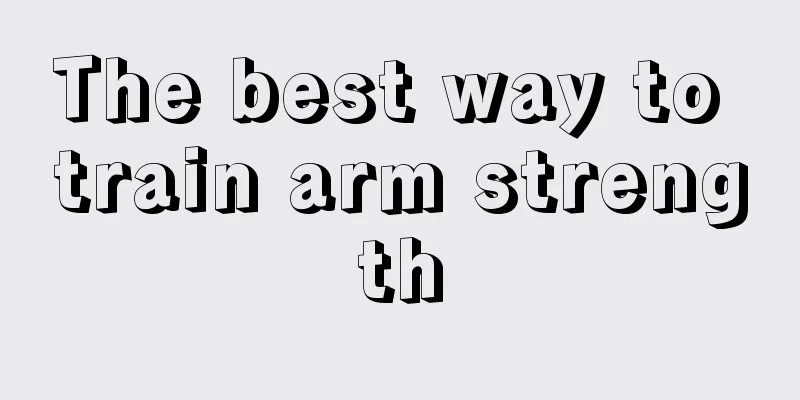How do you train your abdominal muscles?

|
Muscles are a very important part of the body. There are many muscles in the body, which are responsible for different functions. Only when these muscles remain normal and healthy can many functions of the body be used well. For example, only when the muscles in our arms and legs are normal can we move. Healthy abdominal muscles ensure the health of your internal organs. So how do you train your abdominal muscles? Let us introduce it below. Sit-on raises - an ineffective exercise Lie on your back on the floor, stretch your arms on both sides of your head with your palms facing down; straighten your legs and lift your heels slightly off the ground; bend your hips, straighten your thighs and raise them until they are perpendicular to the ground, lift your shoulders off the ground, and straighten your arms and try to touch the front of your calves. In this training process, there are actually two parts. One part is curling up the trunk, and the other part is raising the thighs. The latter "borrows" a lot of strength from the gluteal muscles. Therefore, in order to enhance the effect, you can simply curl up the trunk, and the training effect will be better. Cross-body tuck – effective training exercise Lie on your back on the floor, bend your left leg, and place your left foot on the floor; lift your right leg and place it on your left knee, similar to "crossing your legs"; place your left hand behind your head with your elbow bent; extend your right arm to your side with your palm facing down; use the strength of your abdominal muscles to control your left shoulder off the ground, and try to touch your left elbow to your right knee; stay for a few seconds; then slowly return to the initial position. Repeat this 20 times, then switch to the other side and do the same number of times. This completes 1 set. Seated Leg Raise - Ineffective Exercise Sit on the floor, lift your upper body off the ground and make it at a 45-degree angle to the ground, bend your elbows slightly, place your palms on the ground, straighten your legs, lift your heels off the ground, and keep your toes tight. Bend your knees so that your thighs are close to your abdomen, and at the same time, bend your torso slightly forward so that your thighs and torso form a V shape. There are two mistakes in this training movement. First, the lifting of the thighs does not rely largely on the work of the abdominal muscles. On the other hand, the forward leaning of the torso during the movement further reduces the stimulation to the abdominal muscles (the principle is similar to bringing the center of gravity of the thigh too close to the abdomen in the "reverse tuck"). During the movement of the abdominal muscles, more work is done against gravity, which means that during the movement, you should lie on your back on the ground instead of lifting up at a certain angle to the ground. How to train abdominal muscles is a question that many people want to know. The above introduction is very comprehensive. You can selectively exercise according to your needs. Since the human body's conditions are different, only by using a method that suits you can you achieve better exercise results. This will make your body healthier. |
<<: How do you train your abdominal muscles?
>>: Is it difficult to train abdominal muscles?
Recommend
What are the methods of muscle endurance training?
If you want to have strong muscles, you can't...
How to choose a sit-up board that is good for your health?
Sit-ups are an exercise we often do in our lives....
How many times a week should you practice hot yoga?
Hot yoga is a popular sport nowadays, because it ...
When is the best time to practice yoga?
Yoga is the best exercise for the body and mind. ...
What precautions should be taken when rafting?
When rafting, some people will always cause some ...
Gifts for new mothers: Four tips to return to your teenage years
After pregnancy and childbirth, some mothers gain...
Does yoga help lose weight?
Yoga is the most fashionable sport in our life no...
Is long-term exercise good for leg pain?
Although in daily life there are always some cond...
How to replenish nutrition after exercise?
Now with the gradual improvement of living condit...
What is the correct way to squat?
In our daily life, we can do some exercises indoo...
Badminton wrist strength training
In China, badminton is one of the more popular sp...
What is the function of water celery
In fact, in addition to allowing us to enjoy thei...
How do you breathe while running?
Maybe many of us don’t know much about how to bre...
What are the middle-aged weight loss exercises?
Middle-aged people may also be obese. If they are...
How to do aerobic yoga for weight loss
If you want to lose weight, what method would you...









